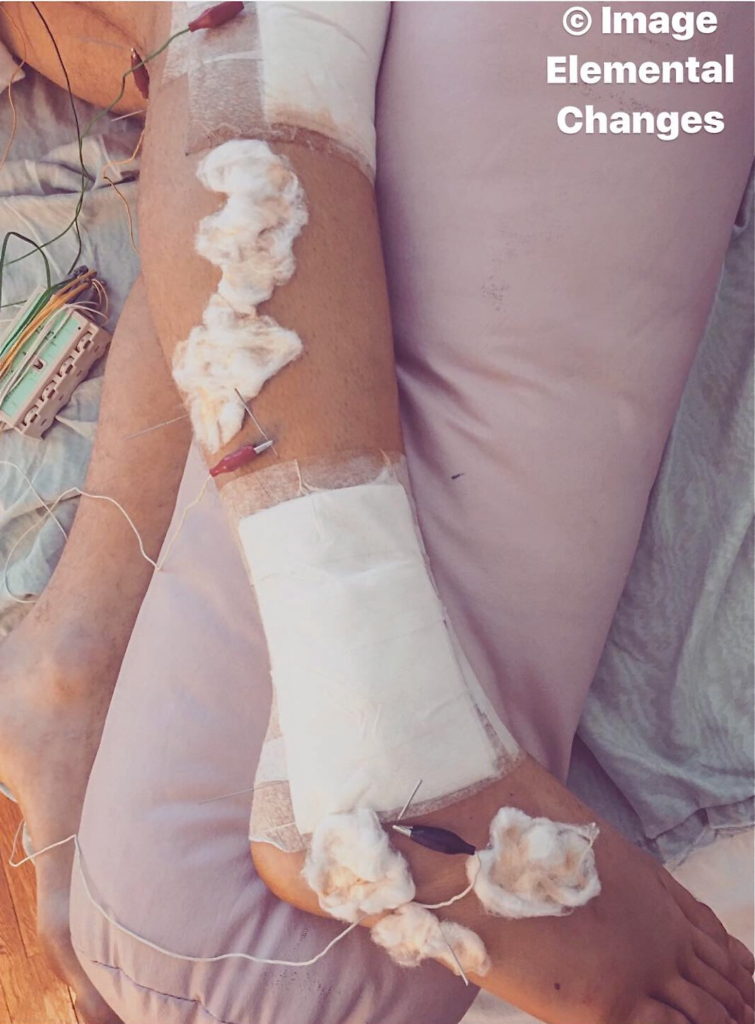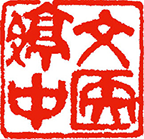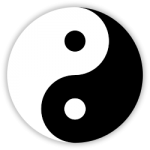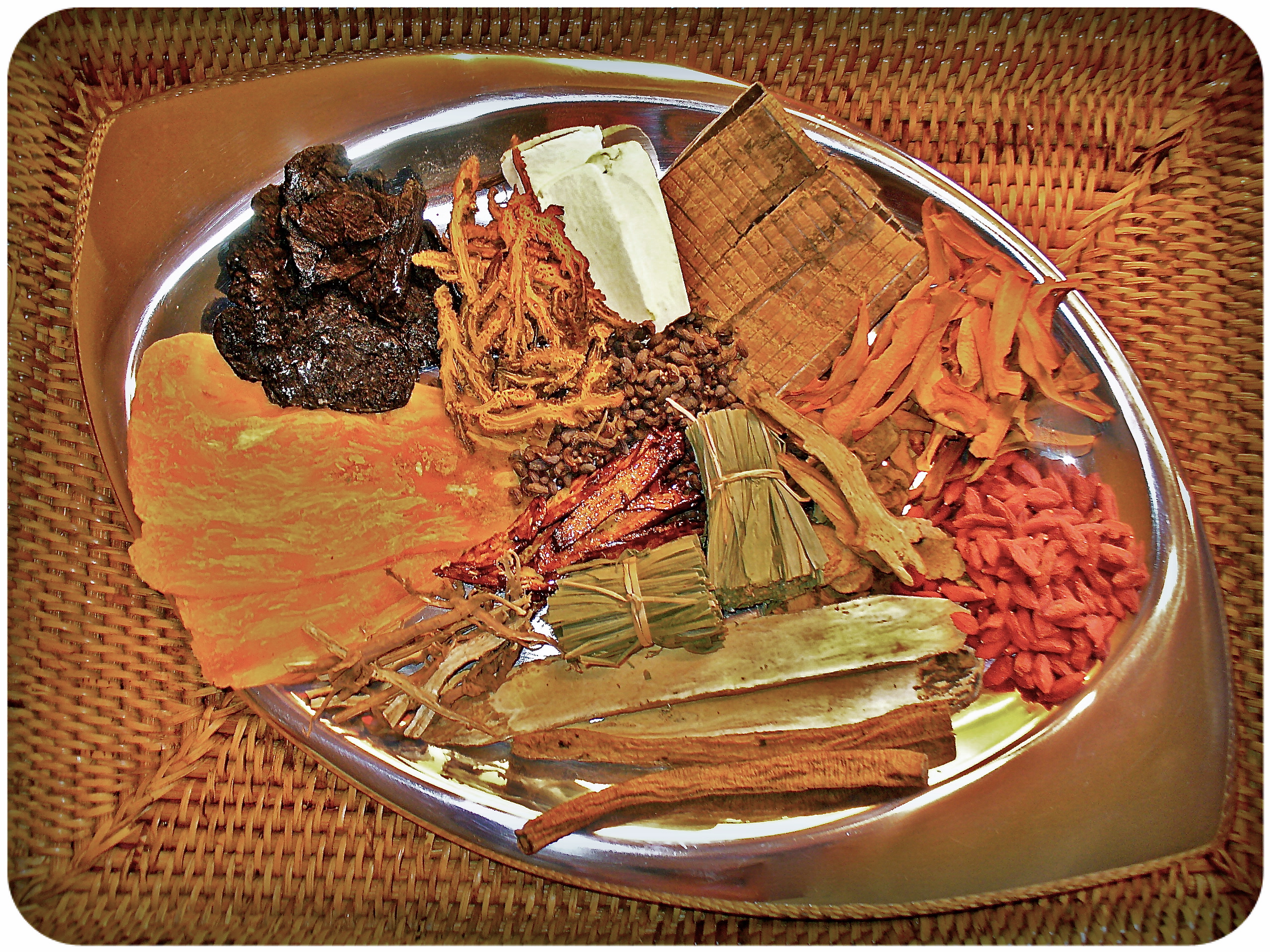chinese herbs
The Auspicious Gingko, Past and Present
Until the Song dynasty [960-1279 AD] the Chinese name for Ginkgo was ‘duck foot’ 鴨腳, referring to the shape of its leaves. The kernel was called ‘duck foot seed’ 鴨腳子, which was changed to ‘Silver Apricot’ 銀杏 for the purpose of its presentation to the Imperial ruler. It was determined that ‘Silver’ was auspicious and that ‘Duck Foot’ was not. During the Ming period [1368-1644] the term for the shell-like sclerotesta and inner parts was ‘Silver Fruit’ 銀果 or Yin Guo, and White Fruit 白果, Bai Guo, which remains Ginkgo’s name in China and in Chinese medicine today.

Gingko Seeds • Photo© Wendy Brown
Pictured, are a few fetid-smelling, squishy, picture-perfect Ginkgo berries I collected from a female tree during the second week of December of 2014. The nuts have a slightly poisonous quality and thus, should not be taken in large quantities or for prolonged periods of time. The medicinal nature of Bai Guo astringes, stabilizes and binds, treating Lung and Kidney with sweet, bitter, astringent, and neutral properties. In Chinese medicine, Ginkgo is helpful in nourishing cognitive and nervous system disorders, while calming Shen and nourishing Jing.
![]()
Wellness and Best Wishes to All
Traumatic Injury, Blood Stasis, and Zheng Gu Shui Liniment
✍️Wendy Brown, Lic. Ac.
Supple and elastic tissues tend to be more resilient to injury, however, force can wound any area of the body. Bones, joints, veins, muscles, tendons, ligaments, and the associated organs of injured parts may fall into a condition of blood stasis, both acutely and chronically, as the body attempts to promote healing. The circulation of blood and Qi at the sites of traumatic injuries becomes impaired, and if left untreated in the immediate phases of trauma care and subsequent rehabilitation, over time can transform into a stubborn and recalcitrant disorder of pain and limitation.
The great news is that in the aftermath of traumatic impact Chinese medicine has acupuncture and Tui Na techniques, and time-tested herbal formulas that work wonders, such as the famous Chinese liniment Zheng Gu Shui, which translates as ‘Bone Correcting Water.’
The Chinese herb constituents in Zheng Gu Shui have the synergistic effect to control bleeding and transform blood stasis, thereby opening portals, and move stagnant Qi, relieve pain, reduce swelling, eliminate bruising, strengthen bone and sinew to help regenerate damaged tissues and bone. This essential formula is for external application only and is not to be applied to open wounds. It has a vast range of trauma applications, from bone fractures and joint dislocations, to sprains and strains. It is invaluable in the clinic and should be part of everyones’ personal medicine cabinet.

Photo by E.C.O.M.A.
Acupuncture should follow wound care and bone setting and be continued, often daily, in the days or week(s) following the initial trauma.

Medicinals can not work to their potential, or at all, if used incorrectly for the particular needs of the condition. Consult your licensed acupuncturist for the appropriate guidelines in applying Zheng Gu Shui.

The Smell of Burning Moxa
The Basics on Chinese Herbs
Bulk Chinese herb preparations are one form of supplementation in Chinese herbal medicine. Others are freeze-dried concentrates, as well as various pill forms, and externally applied liniments, washes and plasters. More than three hundred Chinese herbs and medicinal substances are commonly used in herbal prescriptions that have a history of use dating back more than 2,000 years.
Today it is important that sources of these medicinals are made using highest quality raw materials and processing standards such as GMP *Good Manufacturing Practices,” which lab tests for microbial contaminants, heavy metals and pesticide residues. It is also important to be aware that no form of endangered species, pharmaceutical contaminants, lactose, corn, wheat, or sugar are part of medicinals. Over the course of history, vast experience has been gained in perfecting clinical applications, as well as in ethical, healthy sourcing of Chinese herbal medicinals.

Pictured is some of my medicinal pharmacy. • Image Reserved © Elemental Changes
Chinese Herbs, Individualized Medicine
Every instance of illness has a unique configuration and requires unique (not fixed) treatment. To relieve the suffering of the times, there is no greater path than Chinese medicine. Within it, nothing is more effective than prescriptions of herbs and materials for each individual’s condition.
The 250 Year Old Man
 When Lǐ Qīngyún 李清雲 was 105 years old, he traveled to Pingliang County in Gansu province of Tibet to collect herbs. In the Kunlung mountains Li met a hermit who was much older than he. Li asked the elder for the secret of long life, and the old hermit laughed, saying, “Why are you asking me? Aren’t you doing quite well on your own?”
When Lǐ Qīngyún 李清雲 was 105 years old, he traveled to Pingliang County in Gansu province of Tibet to collect herbs. In the Kunlung mountains Li met a hermit who was much older than he. Li asked the elder for the secret of long life, and the old hermit laughed, saying, “Why are you asking me? Aren’t you doing quite well on your own?”
“Ren Shen參, Zhu Ling猪苓, Ling Zhi靈芝, and the orchid are herbs of longevity,” the hermit said. “The mountains, forests, and the wilderness are all places of quietude. Nature is the secret of longevity, and you have all of this, so why are you asking me?” But, Li was persistent, even begging the elder. The old hermit spoke of some breathing [Qigong] and a word of dietary advice to follow.
After his encounter with the elder, Li recruited three Taoist adepts to go to Emei Mountain, a famous Taoist mountain in Sichuan province, to live in practice of these ways. There, Li built a hut and taught the methods to the others. According to Li, within a few years he was able to abstain from grains [bìgǔ 辟谷], learning to lighten the body.
Exercises practiced every day, regularly, correctly, and with sincerity, Li was able to achieve the power of Bìgǔ, attested to by the brightness of his eyes and the sharpness of his senses. He was full of energy, exceeding his former self. At that time he was already 140 years old, but the people who met him said he looked like he was in his 40s.
Li remained at Mei Mountain for about 100 years. The number of his followers grew to around 100; all baby-faced, white-haired elders, each over 100 years old. After the Manchu Dynasty ended and the Republic was born, Li decided that he was quite old now and decided to move to the Chen Compound in Kaixian 开縣.
What annoyed Mr. Li was that living in the town was just too noisy and there were too many social functions. Some people there challenged him, openly telling him that they did not believe him to be 250 years old. He showed no sign of anger, but his answer on one occasion revealed his displeasure. “Why should I tell a lie?”, he would say. “It’s up to you whether you believe it or not. If you believe I have lived 250 years, it doesn’t benefit me. If you don’t believe, it doesn’t hurt me. But I have to tell you, during my life I have never lied and I have never cheated.”
JU HUA or CHRYSANTHEMUM FLOWER
Spoken of medicinally by the physician of mythical stature, Shen Nong [said to have lived in about 2,800 B.C.]. In The Canon of Materia Medica 神農本草經 it was first proclaimed that Ju Hua improved senses of vision and hearing, alertness, clarity of thinking, promoted an energetic body, and increased longevity by slowing aging. It is now wide-spread knowledge that Ju Hua pacifies the Liver therefore brightening vision, while also relieves fever and vanquishes toxins-among other attributes. [see comment box]
Jing Ming 精明 translates to mean the brightness of the eyes, but also the essence of mind & emotions that is reflected through the eyes. Oriental medicine acknowledges the relationship between tissues and organs. The clarity and brightness [Jing Ming] of the eyes is a reflection of the Liver, which imbues the capacity for observing direction [inner, and of the world] and all material things-including distinguishing black and white and examining far and near.
 Drink Chrysanthemum Tea Frequently
Drink Chrysanthemum Tea Frequently
Modern analysis shows that chrysanthemum contains choline, vitamin A, B1, glycosides, adenine, amino acids, flavonoids, and inhibits bacteria and has antivirual qualities [Staphylococcus aureus, Streptococcus hemolyticus B, Pseudomonas aeruginosa, Shigella dysenteriae, tubercle bacillus and dermatomycosis.] Ju Hua enhances capillary strength, and balances factors contributing to high blood pressure, arteriosclerosis, elevated cholesterol, palpitations, dizziness, migraines, cold & flu.
Chrysanthemum Tea Recipe
Unless the Ju Hua is a part of a decoction, it can be brewed as a simple beverage tea in the following manner:
1] Use approximately 25 grams of dried chrysanthemum flowers
2] Boil 5 cups of water in a sauce pan on the stove.
3] Add the chrysanthemums & turn OFF the burner. Simmer for about 15 minutes with a lid on the pot.
4] Strain tea removing the bits of chrysanthemum flowers
5] Add a tiny taste of honey [only if desired]
Yields 4 Servings Drink over the course of the day or share with a friend.
Diabetes in Traditional Chinese Medical Treatment
Diabetes Mellitus originates from deficiency of Yin and manifests externally as a syndrome of excessive heat. As the disease progresses, deficiency of Yin produces dry-heat which in turn damages QI and Yin, exhausting both Yin and Yang in time. The incidence of diabetes is projected to double in the next 10 years worldwide; yet, in 752 A.D., the distinguished physician Wang Tao published the famous book Wai Tai Mi Yao, a comprehensive medical guide which implicated the pancreas as the organ involved in this pattern of disease. Herbal treatment in the initial stage countered with herbs that had a cold nature and that nourished Yin – the same diagnosis & treatment today. In China, diabetes is not as prevalent as elsewhere. The incidence rate of diabetes in China is reported to be 0.67%, compared with about 2.2% in the U.S. 90% of the U.S. cases are insulin-independent, due to genetic factors, diet and obesity.
STAGES OF DEVELOPMENT
• Diabetes develops initially over a period of about 3 years.
• Intermediate stage (with deficiency of QI and Yin) over a period of about 5 years.
• Late stage (with deficiency of QI, Yin and Yang) develops over a period of about 8 years, with blood circulatory disorders that progress throughout.
Along with Chinese herb therapy, Acupuncture can be used to treat such risk factors as obesity, high blood pressure, high cholesterol and triglyceride levels, etc., the diabetic syndrome itself, and the secondary effects of diabetes. About 70-80% of those using acupuncture and appropriate formulations of Chinese herbs at the high Chinese-style dosages, achieve improvement, often better than the many western drugs; while 20-30% show only a marginal response. Blood sugar levels may not reach norms but can be reduced enough to ameliorate symptoms and decrease the secondary risks of long-term elevation of blood sugar.

Wellness Best Wishes to All







